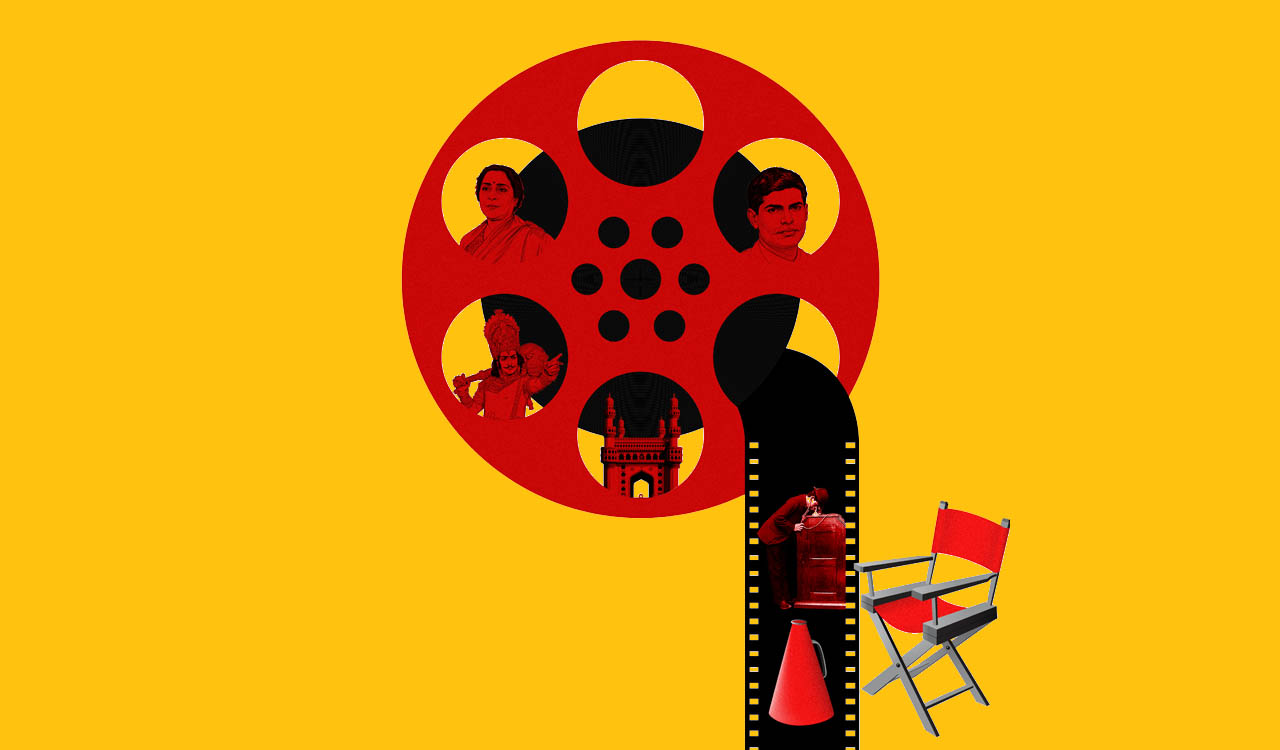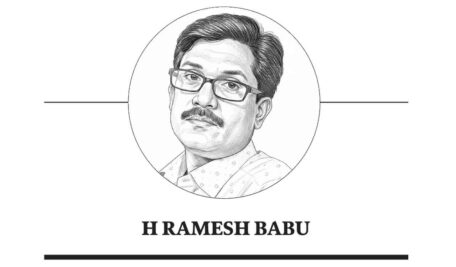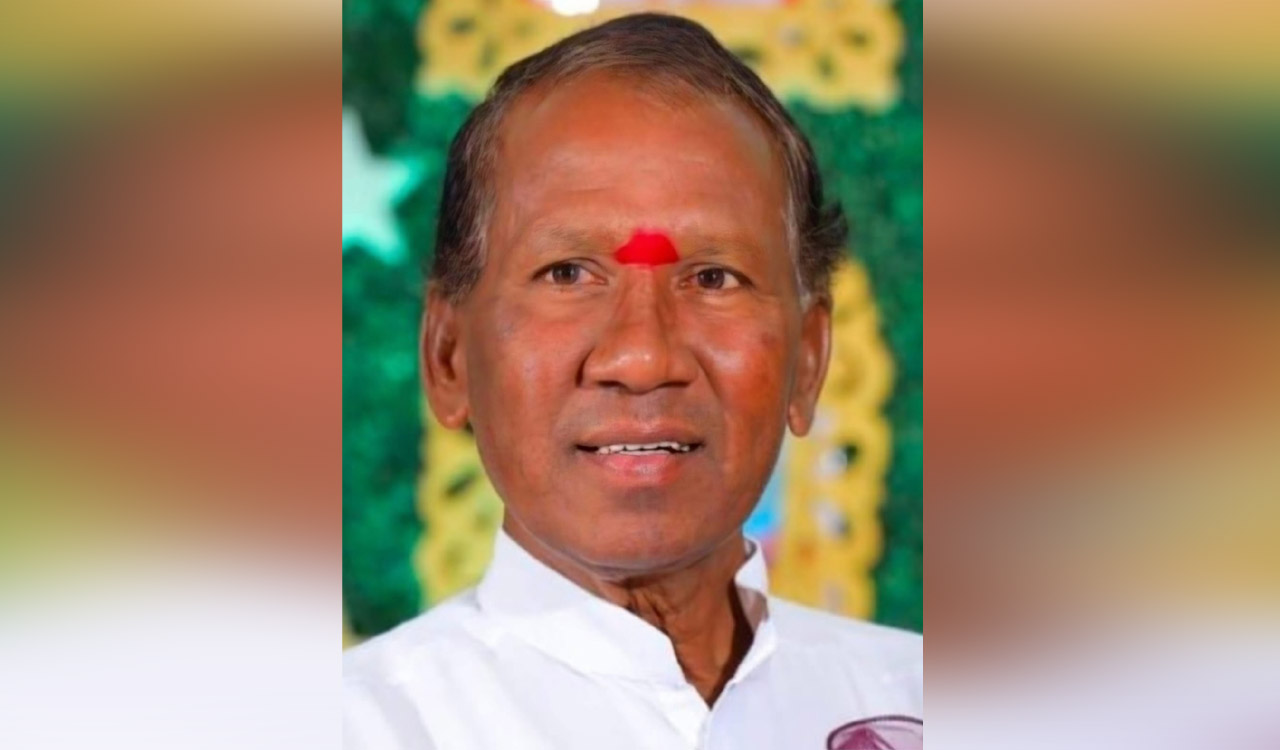Rewind: When Hyderabad shaped India’s silent film era
Hyderabad film journey began around 125 years ago, paralleling Bombay and Madras, while producing stars and pioneers

By H Ramesh Babu
The film industry in Hyderabad took root around 125 years ago and made its mark during the silent film era. The city of Hyderabad became a venue for the screening of silent films as early as 1896, giving it a cinematic history parallel to that of Bombay and Madras during the same period.
Also Read
If the Telugu pioneer Raghupathi Venkaiah is said to have shown silent films in Madras in 1910, then two years earlier, in 1908, a travelling film exhibitor named Babu PS screened silent films through his Bioscope Film Company in Khammam and Nizamabad. The filming of the Musi floods might have taken place in the same year, 1908. Two years later, in 1910, Colonel Williams is believed to have shown films in the Secunderabad Cantonment area using 8 mm and 16 mm projectors.
Lights, Camera, Action…
All these were key developments during the silent film era in Hyderabad. Meanwhile, Dadasaheb Phalke made India’s first silent film, Raja Harishchandra, in Bombay in 1913, laying the foundation for Indian cinema. Alongside him, producers such as Chandulal Shah and Ardeshir Irani were consolidating the silent era. In Hyderabad, around 1920, Estate Talkies was built near the present-day Salarjung Museum for the Nizam family to watch films. It was later renamed State Talkies.
At the invitation of the seventh Nizam, Mir Osman Ali Khan, filmmaker Dhiren Ganguly arrived from Calcutta in 1922 and made several silent films until 1924. He not only set up a studio in Gunfoundry, but also built two theatres to exhibit his productions. These developments inspired many aspiring artistes in Hyderabad. Consequently, several went to Bombay to act in films during the silent film era.
First Actors from Telangana
Before the Telangana statehood movement, it was widely believed that LV Prasad, from Andhra Pradesh, was the first Telugu to go to Bombay in 1930 and act in Hindi films. However, historical evidence shows that Paidi Jairaj from Hyderabad preceded him, moving to Bombay in 1928.
Interestingly, before Paidi Jairaj, an artiste named Rampyari from the Nagulachinta area of Old Hyderabad went to Madras, where she learned classical dance, and later moved to Bombay. She made her debut in Gunsundari in 1927, produced by Chandulal Shah’s company.
After Dhiren Gunguly made eight silent films between 1922 and 1924, film production in Hyderabad came to a temporary halt due to political reasons. However, the impact of his work on the people remained, and many enthusiasts left for Bombay as early as 1925 to pursue acting careers.
Stunning Sisters
As research progresses, new facts continue to emerge. Exactly a century ago, two sisters from Hyderabad State — Sunalini Devi and Mrinalini — also went to Bombay and acted in silent films. A cinematographer from Hyderabad, Mohammed Abdul Rehman, popularly known as MA Rehman, later joined Nadia Wadia’s company as a cameraman during the same era.
Sunalini and Mrinalini were daughters of Aghorenath Chattopadhyay, principal of Nizam College, and younger sisters of Sarojini Naidu, the Nightingale of India. During that period, Hyderabad’s cultural scene flourished under the influence of the Chattopadhyay family, with poets, artists, musicians, actors, and dramatists shaping a vibrant artistic identity. Sarojini Naidu’s younger brother, Harindranath Chattopadhyay, and the two sisters were deeply involved in theatre, often performing with Sarojini’s children, Jayasurya and Padmaja Naidu. Harindranath’s artistic connection in Bombay drew them towards the film industry.
In Bombay, Himanshu Rai and Devika Rani played instrumental roles in the development of Indian cinema during the 1920s. Before establishing Bombay Talkies, they produced The Light of Asia (or Prem Sanyasi) in 1925, a silent film starring Hyderabad’s Sunalini and Mrinalini. The film was a major financial success and was also released in Germany. Himanshu Rai, Seetha Devi, and the other who acted in the film became famous.
Afterwards, Sunalini remained in Bombay and continued to act in films. After the advent of talkies, she played character roles in films such as Veer Kunal (1932), Hum Tum Aur Woh (1938), Pooja (1940), Mohabbat (1943), Mahakavi Kalidas, Umang, Gali (1944), Phir Bi Apna Hai (1946), Shanti, Naukadubi (1947), Shikayat, Azadi Ki Raah Par (1948), Dilruba (1950), Malhar (1951), Nau Bahar, Tamasha, Kafila (1952), and Baap Beti (1954).
After The Light of Asia, Mrinalini moved to Madras, where she worked as the editor of the international quarterly magazine Shama, which focused on arts, culture, and civilisation. She edited the magazine until 1931, and later published several literary works, including The Magic Tree by Harindranath Chattopadhyay, Perfume of Earth (1922), Sakkubai (1924), and Cross Roads (1934).
First technician from Telangana to work in Bollywood
Mohammad Abdul Rehman was born on 14 March 1914 in Aurangabad, then part of Hyderabad State. Fascinated by cinema from a young age, he left for Bombay as a boy to pursue his dream. During the silent era, in 1925, he began his career at Wadia Movietone Film Studios as a light boy, earning one rupee a day. By 1929, at just 19, he worked as a cameraman for the silent film Milan Dinar, directed and produced by Fatima Begum under the banner of Victoria-Fatima Films. This made Rehman the first technician from Telangana to work in Bollywood.
He also worked as a cameraman for Shakuntala in 1929 for the same studio. Later, he became a renowned cinematographer in the talkie era. He married actress Tanjuru Lalita Devi from Hyderabad and moved to Madras in 1940, where he worked on films such as Bhakti Mala, Bhagyalakshmi, Gudavalli Ramabrahmam’s Mayalokam, Sri Lakshmamma Katha, and NT Rama Rao’s first screen appearance, Mana Desam.
In recognition of his contributions, Rehman received the NT Rama Rao Raghupathi Venkaiah Award in 1983. Thus, Hyderabad’s contributions to Indian cinema began not with the talkies but during the silent film era itself that laid the foundation for Telangana’s cinematic legacy.
Early Cinema in India
Cinema, derived from the Greek word kinema, meaning movement, took the form of a motion picture following the invention of the Kinetoscope by Thomas Alva Edison in 1889. Initially, motion pictures were made only for a few minutes, and were introduced in India by the Lumière Brothers in 1896. The Lumière Brothers improvised the cinematograph, allowing multiple viewers to watch simultaneously, unlike Edison’s ‘peepshow’ method. The Brothers screened six films at the Watson’s Hotel in Bombay in 1895, of which The Sea and The Arrival of a Train marked the birth of cinema in India, inspiring Dadasaheb Phalke to make India’s first feature film, Raja Harischandra, in 1913.
According to Bioscope, a publication focused on films, in the first week of September 1896, a person named Stephen Putnam Hughes screened motion pictures in peep-hole shows across Secunderabad. The book also mentions that in August 1897, a foreign film-screener named Stevenson travelled across South India, screening films in Hyderabad and Secunderabad. Stevenson also used to screen films privately for the elite families in Hyderabad.
In 1920, Sardar Khan constructed the ‘Deccan Cinema Theatre’ at Parbhani in the present-day Maharashtra. However, Maruthi Talkies in Vijayawada, constructed in October 1921, was publicised as the first theatre in the Telugu-speaking States.
Though Bheeshma Pratigya is known to be “the first motion picture produced by Telugu people” in Madras, it was, in fact, C Pullaiah, who produced Bhakta Markandeya in Kakinada in 1925.
Forgotten Frames
- 1896: Hyderabad city hosted silent film screenings, matching cinematic history of Bombay and Madras
- 1908: Babu PS’ Bioscope Film Company toured Khammam and Nizamabad with silent film shows
- 1922–24: Filmmaker from Calcutta, Dhiren Ganguly, set up Hyderabad’s first studio at Gunfoundry, producing eight silent films
- 1925: Hyderabad sisters Sunalini and Mrinalini starred in The Light of Asia in Bombay
- 1929: MA Rahman became Telangana’s first Bollywood cameraman, later winning the Raghupathi Venkaiah Award
- It was believed that LV Prasad was the first Telugu to go to Bombay in 1930 and act in Hindi films, but historical evidence shows Paidi Jairaj from Hyderabad preceded him, moving to Bombay in 1928
- Though Bheeshma Pratigya is known to be “the first motion picture produced by Telugu people” in Madras, it was, in fact, C Pullaiah, who produced Bhakta Markandeya in Kakinada in 1925
- Maruthi Talkies in Vijayawada, constructed in October 1921, was publicised as the first theatre in the Telugu-speaking States

(The author is a film historian)
Related News
-
Komuravelly Kalyana Mahotsavam to mark start of annual jathara
20 mins ago -
Over 8 lakh voters to cast ballots in Arunachal polls on Dec 15
30 mins ago -
AIIMS-led trial proves Supernova Stent safe and effective for stroke patients
39 mins ago -
Man killed, wife injured in Sangareddy road accident ahead of panchayat polls
49 mins ago -
Nitish Kumar Reddy claims hat-trick for Andhra in Syed Mushtaq Ali Trophy
1 hour ago -
Triveni Continental Kings eye hat-trick in Global Chess League
1 hour ago -
Aman Sehrawat and Sujeet clinch freestyle gold as RSPB win Senior Nationals trophy
1 hour ago -
India stun Egypt 3-0 to enter Squash World Cup final for the first time
1 hour ago




